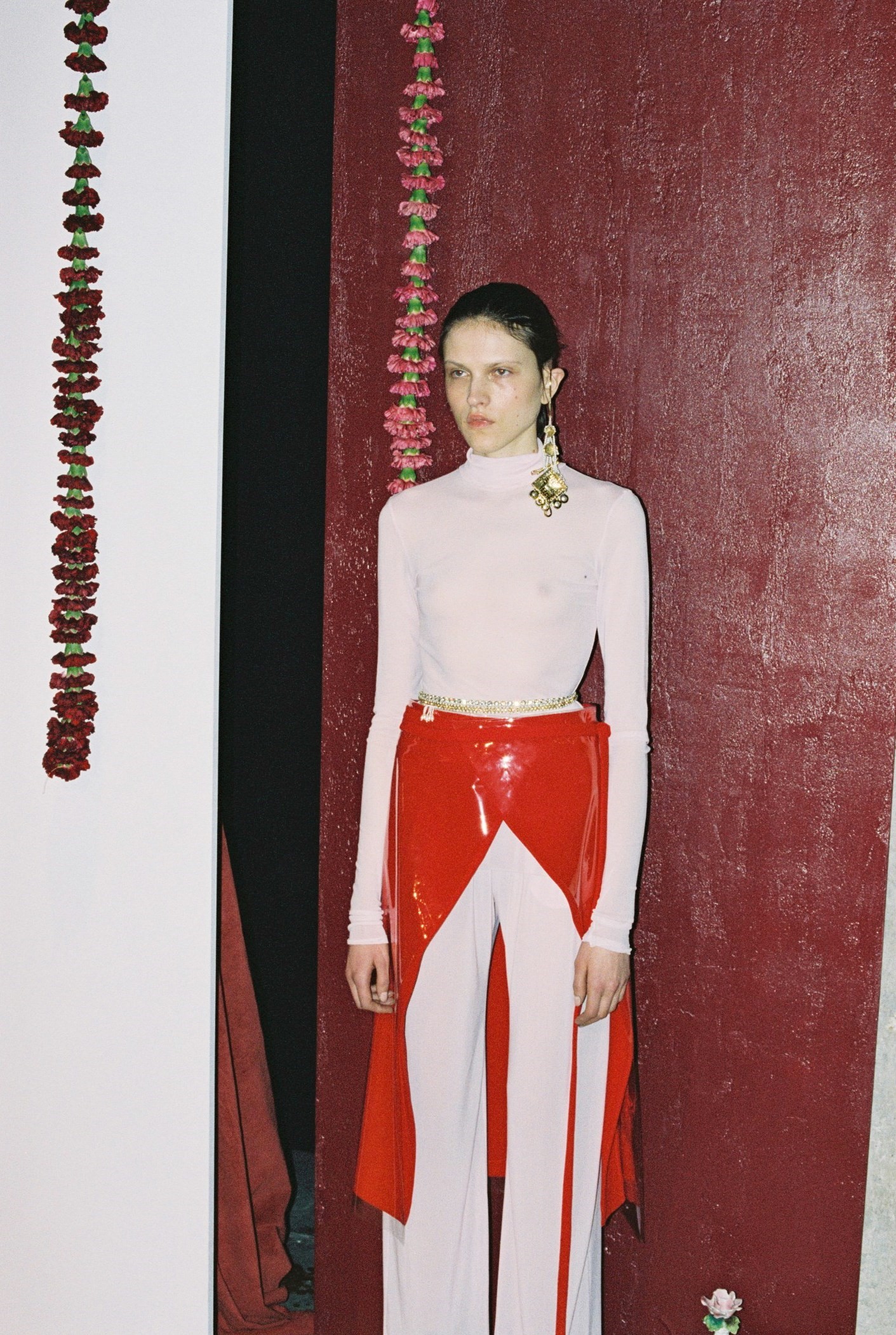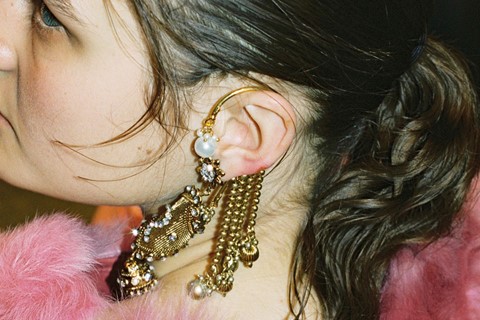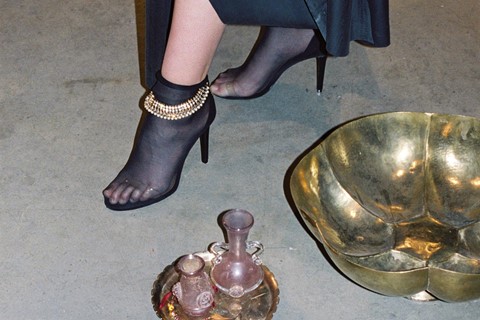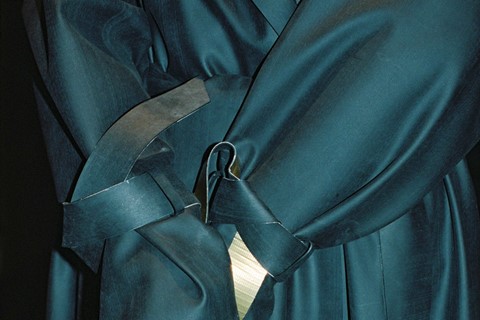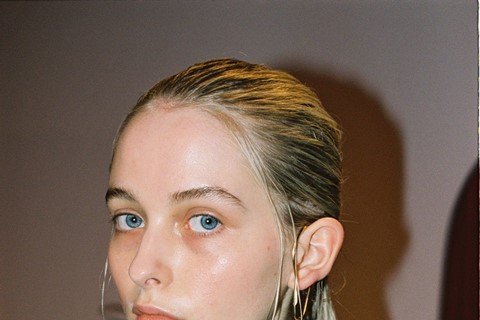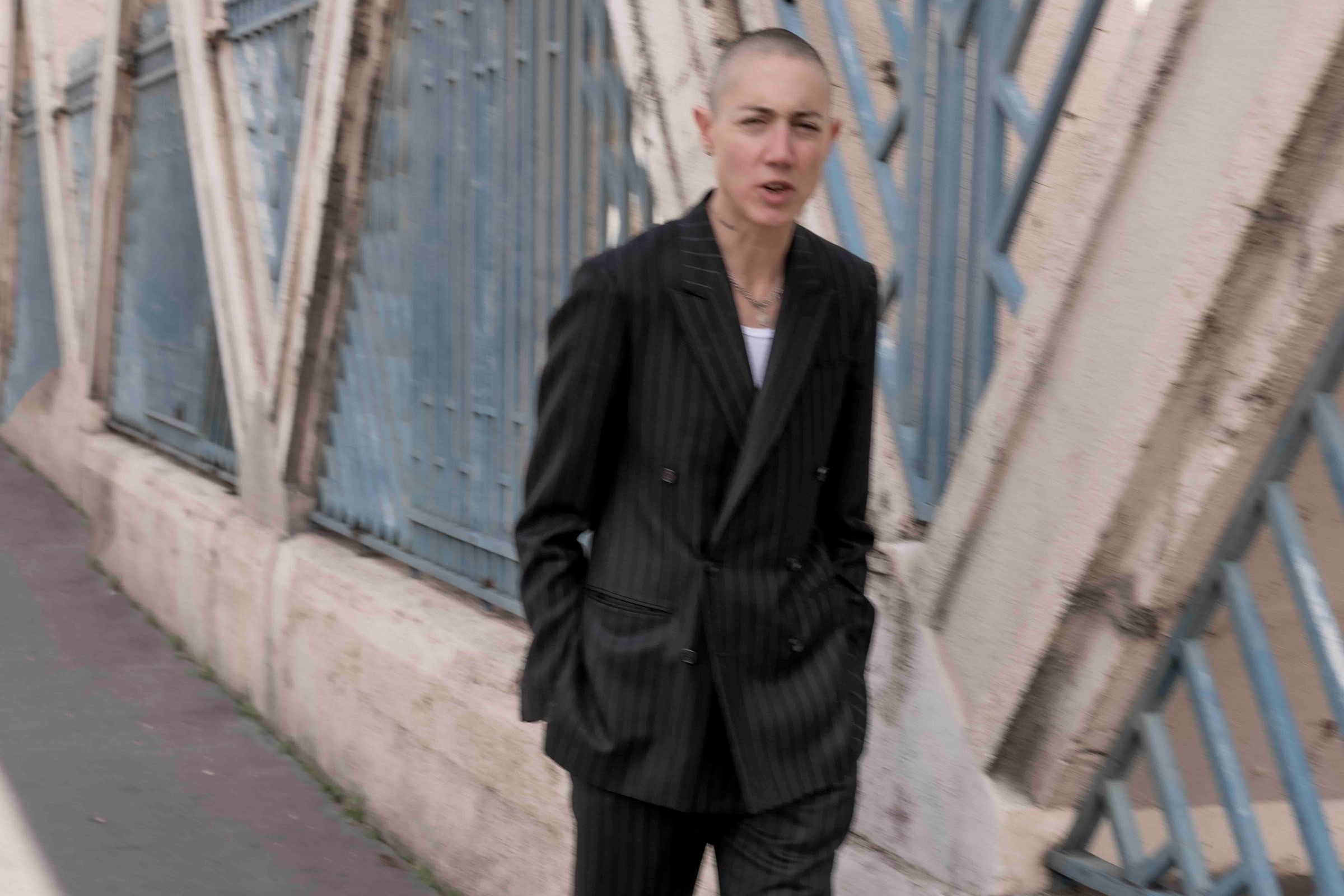“I haven’t been here in eight years!” Supriya Lele says of her grandfather’s house, where she’s calling from in Nagpur. Despite her recent absence from her Indian family’s home, memories and echoes of the place flit through her debut collection, A/W17, which she presented this season in collaboration with Fashion East. Sharing a platform with young designers Mimi Wade, Matty Bovan and Asai, Lele’s presentation preceded the three-tiered catwalk show, so afoot the entrance to the show stood a pack of elegant, yet ultra modern, female forms. A cellophane-wrapped pink silk dress, printed PVC trousers, shaggy shearling knits, glossy red latex pelmet skirts and kitsch chandelier-style jewels were juxtaposed to alluring effect – simultaneously sumptuous and off-key. An irresistible invitation, Supriya Lele quietly coaxed in the crowds and set the tone for her eponymous brand as a new label-to-watch.
Coming together with friend Daisy Azis, one half of set designer duo Studio Maud, Lele constructed a modern space with plaster walls painted in cool matte pink or glossy oxblood. Against this minimalist backdrop, a few garlands of carnations hung from the ceiling; the occasional burnished gold bowl dotted the floor, filled with incense or petals floating in water. It was the living room of an alluring woman – loose, casual and mysterious – and the scene fleshed out the concise selection of clothing on offer. “I collect lots of tat,” explains British-Indian Lele of the concept. “I have Indian garlands here and there and random bits; I wanted to look at conveying that mood of relaxed contemporary Indian nature, but really bring it into something fresh and different. I wanted something that didn’t look derivative, that didn’t really look Indian until you looked at it closely.” This play with lightness and the in-between allows Lele to create something alluring and new, interweaving threads from her Indian heritage with the gaffa-taped, goth days of her adolescence in the Midlands.
“In Indian culture there is a lot of emphasis on Bollywood and glamour and that really done woman, and none of my family look like that” – Supriya Lele
Lele worked with fellow RCA alumni and make-up artist Alex Box to create “emotional make-up” for the presentation. The beauty look was built around the idea of imperfections and realness, “maybe dark circles – and cheeks a bit blushed but they don’t look like they’ve got blusher on. In Indian culture there is a lot of emphasis on Bollywood and glamour and that really done woman, and none of my family look like that. They don’t really wear make-up – it’s too dusty – and they look gorgeous because they are glowing from the sun, not from bronzer.” This bare-bones beauty and realness, be it overly shiny skin or stuck-down flyaway hairs, serves to lend an extra dimension to the seductive nature of the collection. With this juxtaposition Lele plants the deeply appealing sensuality of a powdered latex trench into real life, leaving it just at arm’s length.

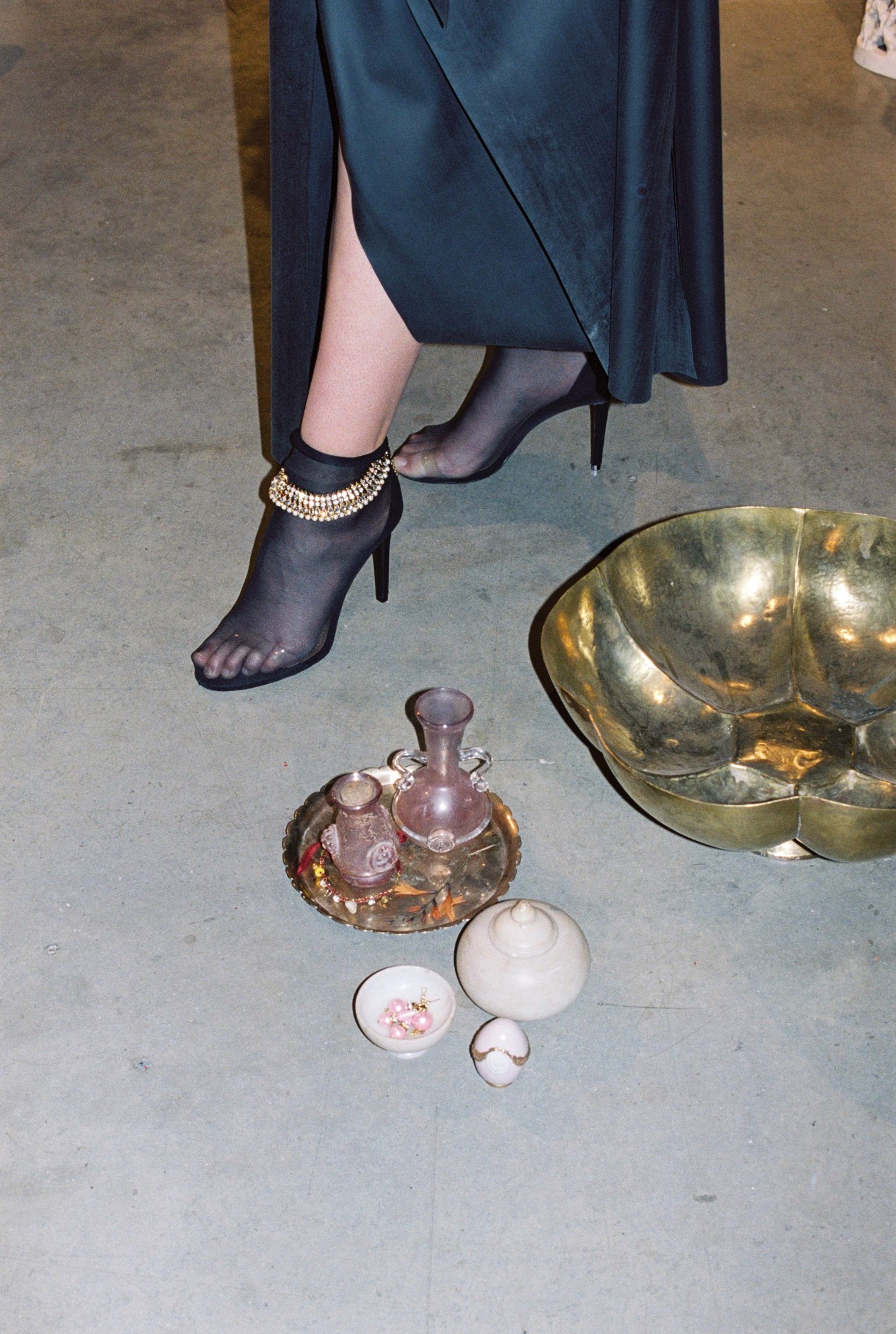
Contrast is key to Lele’s awkwardly erotic aesthetic, combining tacky, tactile qualities with elegant lines; mixing kitschy-colours with seductive shine. “I was looking at these ideas of cheap plastic flowers,” Lele says of a particular pair of glossy black trousers, partially printed with a blown-up floral pattern. “It’s about those overtly feminine tropes: roses in plastic, wrapped with a gold bow, that kind of thing. I wanted to take these really obvious ideas of femininity and a sort of tackiness and bring them into something that I would find really contemporary and beautiful. I mean, red, green, pink and gold – it sounds gross, but really great.”
“I wanted to take these really obvious ideas of femininity and a sort of tackiness and bring them into something that I would find really contemporary and beautiful” – Supriya Lele
But what is it about bad taste that feels so current? Lele excavates her rebelliousness from a youth spent as the goth girl daughter of doctor parents and, though threads of punk shimmer through the collection via gaffa-taped PVC, she creates a contemporary code of anarchy: crassness – albeit crassness offset with an air of cool. “There are a lot of anti-luxury ideas right now,” Lele explains. “Politically and socially, I think people are like ‘No, fuck that – I don’t want to be part of any of this [mainstream view].’” By rejecting the traditional beauty ideals of both her Eastern and Western homes, Lele finds somewhere between – a world that will no doubt continue to enchant, if this delicately broached debut is anything to go by.
